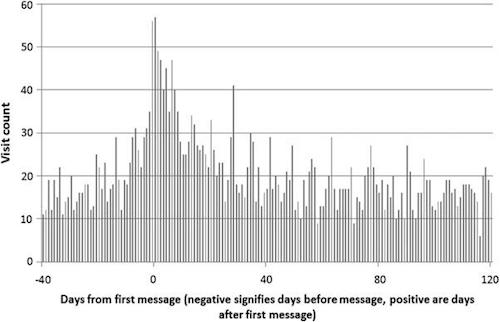 There was no significant change in the frequency of office visits for patients who used an electronic messaging system through a patient portal, according to a retroactive study of 2,357 adult primary care patients at Mayo Clinic's Rochester, Minnesota location.
There was no significant change in the frequency of office visits for patients who used an electronic messaging system through a patient portal, according to a retroactive study of 2,357 adult primary care patients at Mayo Clinic's Rochester, Minnesota location.
The data in the study was from April 2010 to August 2011.
"The portal has been promoted as a way to decrease administrative costs of appointment scheduling and handling of medication refills," researchers wrote in the report. "Patient portal secure messaging is increasingly being viewed as necessary to satisfy patient expectations and to provide a competitive advantage in the move toward accountable care.”
The researchers aimed to look at a subgroup of patients who message doctors often to see if there was a correlation between more messaging and less office visits.
“Each patient served as his or her own control, so that each patient’s yearly appointment frequency before the first portal message could be matched with the same patient’s appointment frequency after the message,” the researchers wrote.
The study looked at three different data points, e-visits, office visits, and secure messages.
With Mayo Clinic’s patient portal, patients can pay $39 for an e-visit, which leads patients through a series of interview questions and produces a structured message based on the information from the interview or an office visit. Mayo Clinic employees and dependents in the study were not charged for primary care office visits or e-visits. No one in the study was charged for the secure messages, which, unlike the e-visits, do not prompt the user to answer questions and instead allow the user to type whatever they want.
The study found there was a slightly decreasing trend in annual visits per patient, from 1.97 visits per year in 2009 to 1.87 visits per year in 2011. But overall, patients who used secure messages frequently did not change the frequency of their office visits and those who sent at least one e-visit message did not change their visit frequency. Patients with comorbid conditions, or chronic conditions, also did not change the frequency of their office visits, even though researchers said they expected this group to decrease the frequency of office visits if patient portal messaging was offered.
When studying the results, researchers also accounted for the surge that occurred after patients sent their first messages.
The researchers pointed out that a few studies that examined the impact of secure messaging found that the frequency of visits changed after messaging was implemented. A randomized controlled trial of 200 patients and six providers in Norway found that there was a significant drop in face-to-face visits among patients who interacted with their providers through secure messaging.
Kaiser Permanente Northwest's study of over 3,000 patients found that patient office visits decreased by about 10 percent after implementation of secure messaging through KP HealthConnect, their messaging portal, while a Kaiser Permanente group in Colorado found that face-to-face visits increased by 0.7 visits per member per year after using secure messaging.














